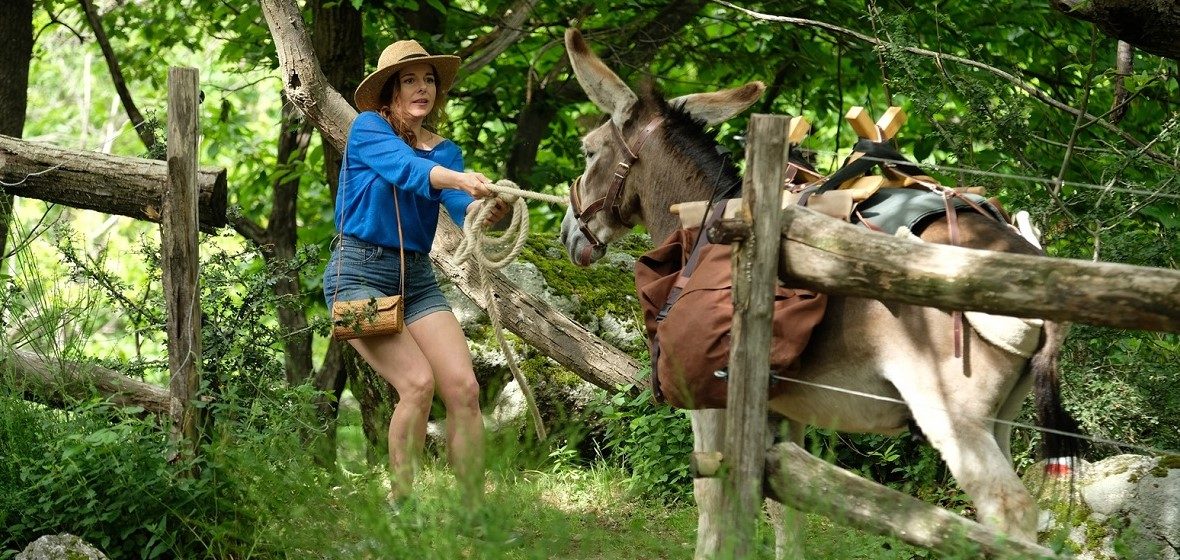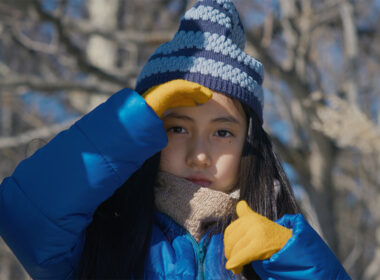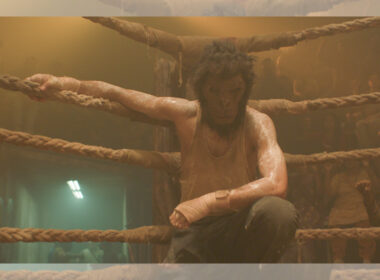Rating: ***
Robert Louis Stevenson immortalises a trail in Southeast of France in a humble travel book called Travels with a Donkey in the Cevénnes written years before Strange Case of Dr Jekyll and Mr Hyde. Considered a defining early work of travel-nonfiction literature, it influenced the genre’s style.
The story goes that Stevenson, at the time was still supported by his parents, had been involved with an American married woman who returned to her husband in California. Maybe feeling the chagrin of his circumstances, young Stevenson hops to the Cevénnes with a stubborn little donkey named Modestine with hopes of finding clarity and manuscript that can make him financially independent. It’s not as Eat, Pray, Love as it sounds.
That’s the setting of Antoinette in the Cevénnes. It is a film about a woman travelling the Southeast of France’s idyllic hills on a donkey because of a married man.
The Antoinette of the title is played expertly by Laure Calamy, bringing a polarising romantic intensity to her performance, without even flinching or caring what the audience thinks of her character. It isn’t easy to like Antoinette at the start, and it’s even easier to judge her. Calamy had already shown similar craft in the Netflix show Call my Agent, where she plays a personal assistant also involved with a married man, in a performance I could only describe as charmingly annoying.
Here, it’s the end of the school year. Antoinette is an elementary school teacher romantically involved with Vladimir (Benjamin Lavernhe), the father of one of her students. The plan for the holidays is to spend as much time with Vladimir as possible (he has one week without his wife and daughter so it’ll just be them and the best Paris offers for lovers). Unfortunately, plans don’t go that way, as Vladimir reveals his wife booked a trip for the family in the Cevénnes to hike part of Stevenson’s trail. Not one to let a meagre wife get in the way of her perfect love story, Antoinette books the same trip the following day.
This plan isn’t well thought, but part of Antoinette’s charm is her impulsive nature. Right on the first night, she realises Vlad and his family are departing from a different area and that she’s not nearly ready to hike for several days straight. And, like an open book, she discloses to her whole group that she’s on this trip because of a married man. The reaction varies – one lady is delighted by the prospect of a tragic romantic heroine unfolding in front of others. Another one takes offence in Antoinette’s endeavour, and looks at her partner like it’s too close to home.
Antoinette is forced out of her comfort zone for the rest of the film, unable to quit and return home, and must complete this foolish quest whether she likes it or not. She develops a genuine relationship with her donkey, Patrick, that becomes the pillar of her emotional growth. From there, it’s just a series of encounters with new, very well written characters who don’t so much as challenge her but let her see a broader perspective. Antoinette starts the film as an ideological hopeless romantic like a modern and independent version of Emma Bovary. She steps into a world that appreciates her and simultaneously gives her space to grow into what she wishes to be.
The surprise is that it works without relying on cheap philosophies and patronising morals. It would be easy to make this film into another ‘white woman goes on holidays to discover her true self’. Still, Caroline Vignal, who wrote and directed it, wants to tell a story that feels personal and real, instead of a syrupy self-help trip that can be quoted for years to come in decorative wooden blocks or framed embroideries. Antoinette has more personality, and her story resonates more truth than Elizabeth Gilbert’s, and the latter is a real person.
Antoinette in the Cevénnes has its heart and beliefs in the right place. Antoinette is a good character, with the flaws that only a non-Hollywood filmmaker would have the guts to present. She feels real and palpable. The characters she meets along the way exist in their own stories, and Vignal makes like it’s just serendipity that they crossed paths. Antoinette never feels like the centre of the world. She never feels like everything and everyone is there to open her way. It’s not her independence she’s working to gain – because what a dull concept for a modern audience – but the strength she seems to have lost. As she meets new people, we realise that the group she met first has been retelling her story to everyone else along the way.
By the end of it, Antoinette is an almost mythical fictional character to everyone else in the trail. But even then, she finally arrives at her last destination and calls for the concierge of the last hotel with a confident “It’s me, Antoinette. I’m finally here”, only to receive a confused “who?” Growth will never stop.
At the end of his trip, Stevenson had a book to publish, and he eventually moved in with his lover, who he ended up marrying. He became one of the most important Scottish novelists who would create blueprints for both horror gothic and adventure literature. So maybe that long hike helps everyone who partakes on it. Or perhaps it was the donkey.




